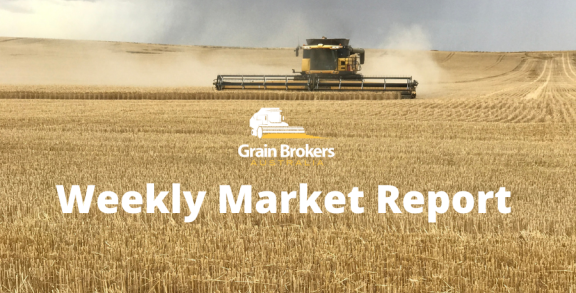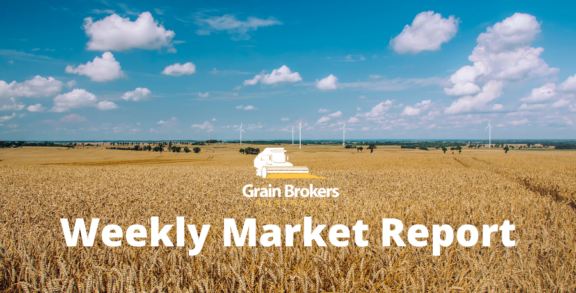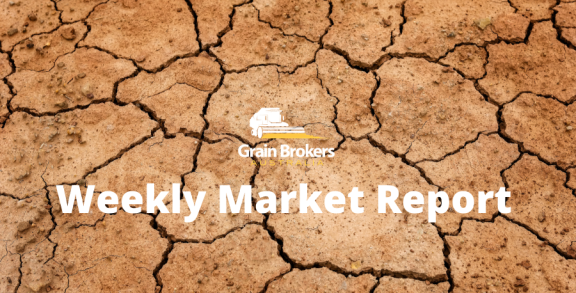
Egypt’s demand for wheat and corn is growing…
Population growth and increased feed grain requirements are expected to drive up Egypt’s demand for wheat and corn in the 2019/20 marketing year, which ends in June 2020.
Egypt is the most populous country in the Arab World, and it is also the largest importer of wheat globally. Wheat has been a critical element of the typical Egyptian diet for centuries, and per capita consumption is amongst the highest on the planet. Wheat represents almost 10 per cent of the total value of agricultural production and about 20 per cent of all agricultural imports.
With more than 25 per cent of the population living at or under the poverty line, the government’s wheat policy is critical in assuring the food security of all citizens. A central component of government policy in this regard is the provision of low-priced bread to the population. This is accomplished through a number of subsidies at the different stages of the value chain: from subsidised inputs such as fertilisers to subsidies on the price of the final product, a flatbread called Baladi.
Under the Egyptian ration card system, around 80 per cent of the population, or 65 million Egyptians can purchase Baladi at a heavily subsidised price of 5 piastres ($A0.005) per loaf. This price has been fixed since 1989 and is a fraction of the current free-market price of around 65 piastres ($A0.06) per loaf.
One of the biggest challenges for the government moving forward is funding the ration card system. A weaker currency, growing population and high world wheat prices have pushed the cost of the program up significantly over the past decade. Reform of the scheme is a top priority for the government; however, a strong sense of entitlement means it is an extremely politically sensitive process.
An added complication is the government is the primary purchaser of all domestically produced wheat. To encourage farmers to plant wheat over alternative cash crops each season it pays an artificially high procurement price which tends to distort farmer crop rotations and reduces farm efficiency.
The principal wheat and corn production areas in Egypt are the Nile Delta region, along the banks of the Nile south of the delta, and in several newly reclaimed agricultural areas. Landholdings are very small, with 90 per cent of them being smaller than 1.3 hectares.
Nonetheless, constant irrigation, adoption of raised beds, a climate that favours an irrigated production system, fertile soils and new varieties that are heat tolerant and consume less water mean the average yields are quite high.
This season’s wheat production is forecast at 8.77 million metric tonne (MMT), up around 3.8 per cent on the 8.45MMT produced in the 2018/19 season. The harvest area is expected to be around 1.37 million hectares, resulting in an average yield of 6.4 metric tonne per hectare.
Egyptian wheat consumption is forecast at 20.4MMT in the 2019/20 marketing year, up from 20.1MMT the previous year. Increases are forecast in all three sectors, food, seed and industrial use. The rise in domestic demand is primarily attributable to population growth, which is running at around 2.4 per cent per annum. The population of Egypt ticked above the 100 million mark earlier this year.
Egypt’s wheat imports for the 2019/20 marketing year are forecast at 12.5MMT, with the General Authority for Supply Commodities (GASC) the primary purchaser. In the 2018/19 marketing year, it issued 26 tenders and imported 6.49 MMT of milling wheat.
In last week’s tender GASC purchased 240,000 metric tonne of Russian wheat and 60,000 metric tonne of French wheat for October 28 to November 5 shipment. On a FOB basis, the French wheat was offered cheaper than the Russian as the European Union’s major cereal producer works hard to shift excess stocks following a bumper harvest. However, at US$214.95 C&F, it ended up being US$1.15 more expensive than the Russian offer on a delivered basis due to additional freight costs.
GASC also purchased 180,000 metric tonne of Russian wheat the previous week for US$211 C&F. That is US$2.80 lower than last week’s Russian offers. Black Sea FOB values have been edging higher in recent weeks so maybe the season lows are behind us; only time will tell.
Indeed, the spate of wheat tenders in recent weeks suggests global consumers see more upside in this market than downside and are eager to take some risk off the table at current values.
Over the last six marketing years, GASC’s largest foreign suppliers have been Russia (17.49 MMT) and Romania (7.02 MMT), followed by France (4.14 MMT), Ukraine (3.05 MMT) and the United States (1.17 MMT).
On the corn front, Egypt’s 20919/20 season production is forecast at 6.4MMT off a harvested area of 800,0000 hectares. While the yield of 8 metric tonne per hectare remains constant, the production and harvested area are down from 6.8MMT and 850,000 hectares respectively the previous season. The decrease is due to increased plantings of rice at the expense of corn.
Corn consumption is expected to jump 4.3 per cent, to 16,9MMT, on the back of increased demand in the country’s poultry, dairy, and aquaculture sectors. Poultry demand is forecast to expand 2-3 per cent annually as the Ministry of Agriculture and Land Reclamation provides land and incentives for increased investment in the sector.
The dairy industry is also seeing significant investment, experiencing a growth rate of 3 per cent per annum in recent years. The sector is automating rapidly, driven by increased demand for fresh and refrigerated dairy products.
Higher corn demand means higher imports and they are forecast to increase by 3 per cent year-on-year to 10MMT. This is up from 9.7MMT in the 2018/19 marketing year and 9.5MMT the previous year.
From an Australian viewpoint, increasing demand for grain, wheat in particular, through the Middle East, Africa and Europe should mean that Russia will have less wheat to ship to traditional Australian markets in Asia. That said, the Australian wheat crop is getting smaller every day, and current export values are far too high to buy back lost demand.
Call your local Grain Brokers Australia representative on 1300 946 544 to discuss your grain marketing needs.





